Last weekend, it was my distinct honour to present for a fourth time at the Bodies from the Library conference, in this instance on the topic of Enid Blyton’s detective fiction as represented by her Five Find-Outers series.
Having now read all 15 books in the series, the mind turns to which I would recommend and how the books stack up against each other. And so, a ranking! Thus, with some brief explanatory notes, from worst to best — as I currently see them — we have…
15. The Mystery of Holly Lane (1953) [FFO #11]
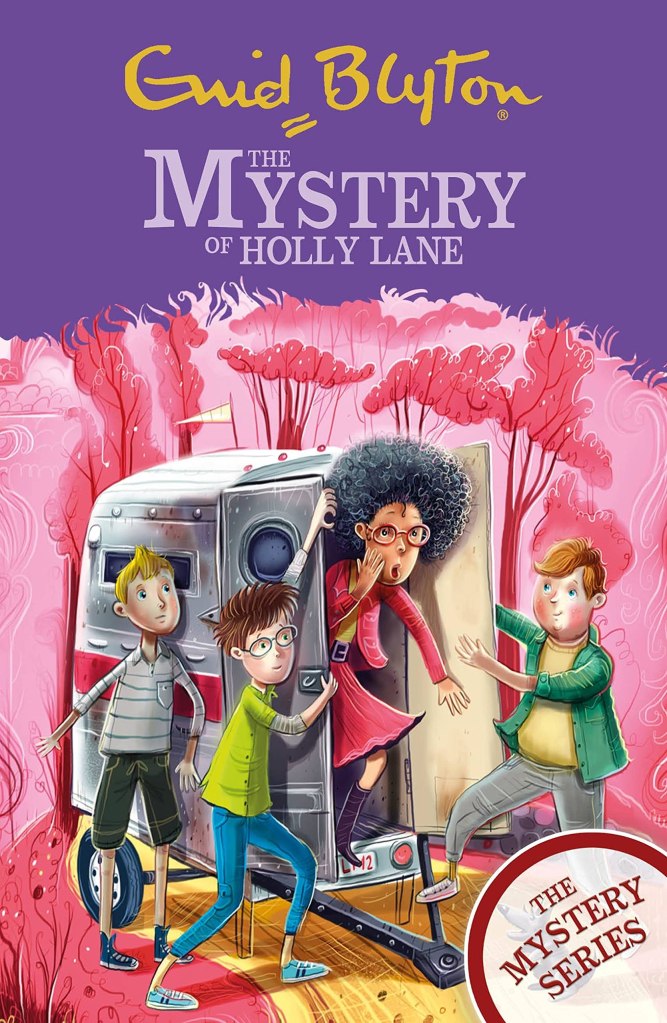
Something has to come last in any ordering of items, and for me The Mystery of Holly Lane (1953) is the weakest of these books if only because it’s so unmemorable. Something about curtains and someone hiding money in…furniture…or something is about the best I can do when trying to summon any impression of this whatsoever, and as such, while I can’t criticise its flaws per se, it’s the one I least look forward to revisiting in due course. Given how much I’ve read down the years, most books leave only vague impressions, but the ones left from reading this are far more vague than I’m used to, hence its low placing. [My review]
14. The Mystery of the Strange Bundle (1952) [FFO #10]
At times, The Mystery of the Strange Bundle (1952) feels like Blyton is trying to stretch the dough of the Find-Outers books to see if it will rise into a different shape. And while some of this is successful, such as the realisation of Mr. Goon’s anger against Fatty and Buster after repeated run-ins, the mystery itself ends up leaning into a sort of semi-sensationalist espionage subgenre that puts the resolution and the consequent awareness of stakes beyond our juvenile detectives. Nothing wrong with testing the limits of a formula, of course, but it leaves the book a little unmoored among its peers and, as such, difficult to get too enthused about. [My review]
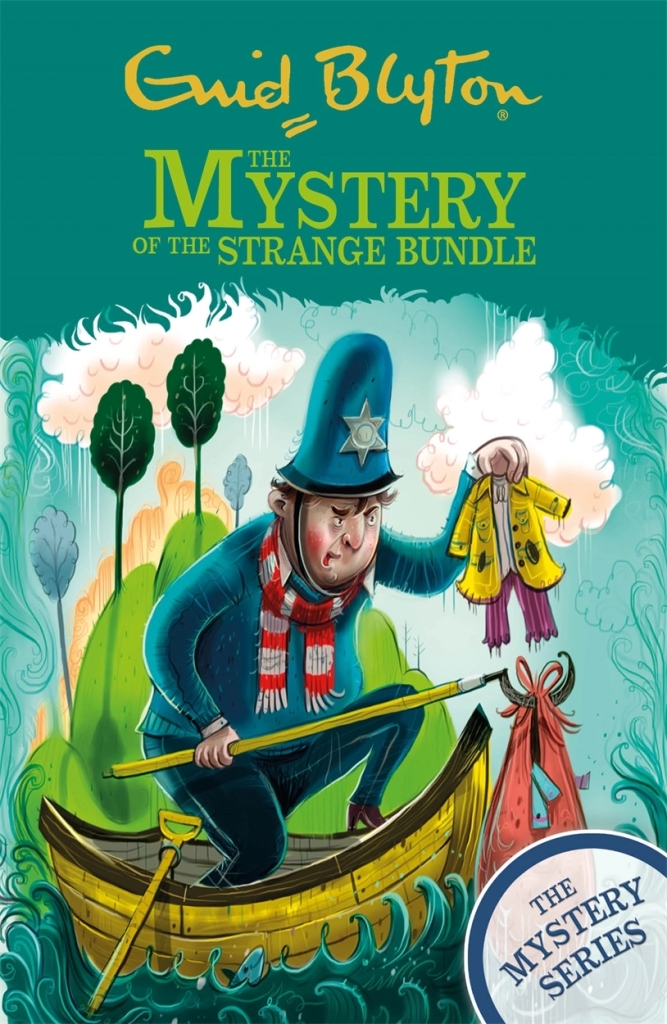
13. The Mystery of the Missing Necklace (1947) [FFO #5]

My abiding memory of The Mystery of the Missing Necklace (1947) is that nothing really happens until the final quarter, when Fatty’s propensity for disguise comes in handy and he puts himself squarely in harm’s way, to the detriment of everything that Goon has — for once, semi-competently — done. A few little changes aside (this is the one where Fatty comes back from school with his voice broken), it feels like Blyton was really struggling to find much to fill this out, and so we get a fair amount of light work that adds up to very little. Maybe I’ll review that on a reread — hell, lists are always a dodgy undertaking, I’ll have cause to regret every ordered list I’ve made at some point — but for now, this lingers low down in my estimations. [My review]
12. The Mystery of the Vanished Prince (1951) [FFO #9]
A notable title for the fact that the Find-Outers take on a case that no-one else is sure even happened, never minds warrants investigation. Mr. Goon’s nephew Ern makes a second appearance, widening the lore with his twin brothers Sid and Perce (“Ar!”), and a lot of the same shenanigans ensue, complete with disguises, false clues, and Mr. Goon being generally useless despite a convention-baiting attempt to get everyone working together this time around. It’s not a bad book in any way, and the finale does well to feel both big and international and small enough to involve five kids from a backwoods town…but apart from that the book is, for me, merely the competent, solid middle ground. [My review]
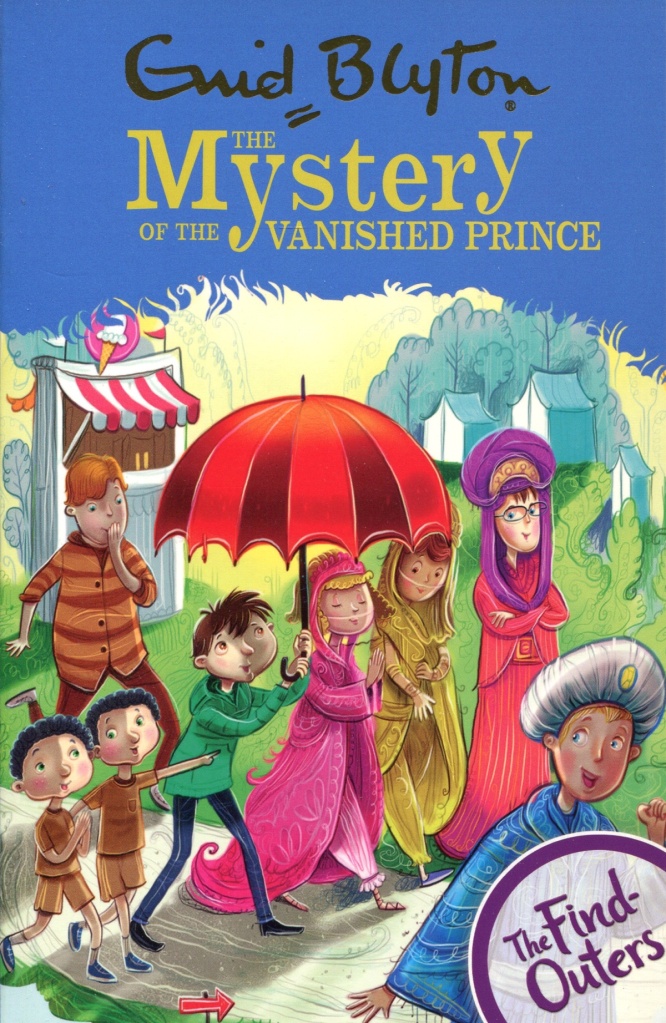
11. The Mystery of the Hidden House (1948) [FFO #6]
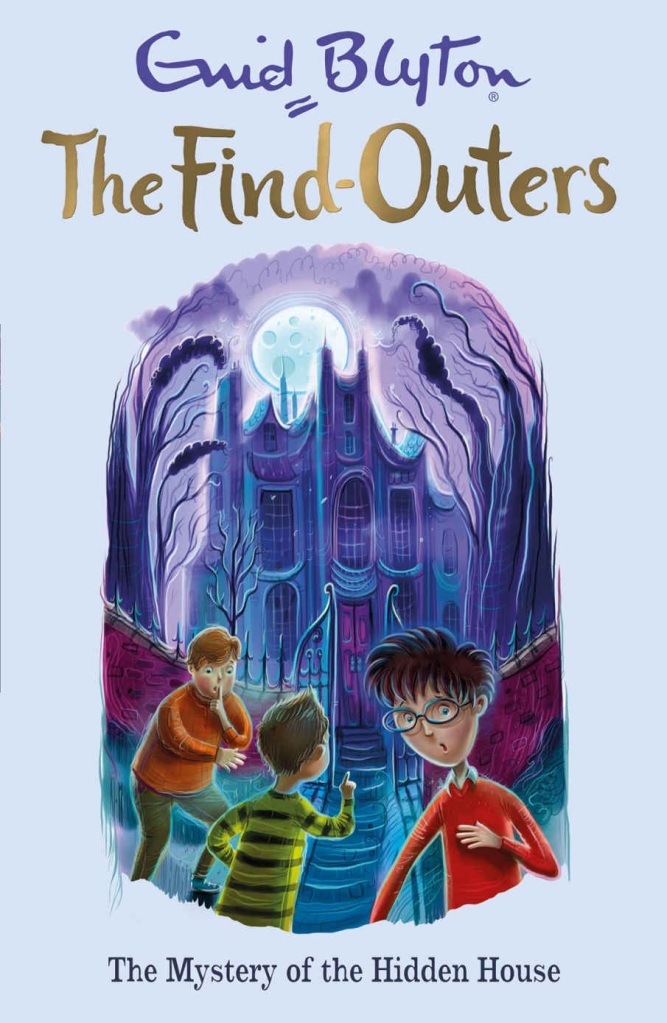
Decidedly more of a thriller, with spooky goings-on in the woods, but notable for feeling like the point in the series where Blyton feels as if she has a handle on how she’s going to make this last. Ern and his terrible “portry” arrive on the scene for the first time, and much fun is had at his expense in a way that feeds into the characters. The detection is fairly rote — some tyre tracks forming most of it, I seem to remember — and the eventual scheme feels like something the Famous Five might stumble upon, but I remember a sense of confidence behind this, Blyton making certain choices because of how the books had gone before and how she saw them shaping up in future. [My review]
10. The Mystery of Banshee Towers (1961) [FFO #15]
Light on mystery, perhaps, but not lacking in the signature charm of the series, this final volume is likely to be the weakest for many readers but is, for me, rather more a distillation of the finer essence of each tale: direct, lacking any false leads or easily-dismissed suspects…if you told me it was a first draft I’d believe you in a heartbeat. Does have the advantage of containing two dogs getting up to plenty of mischief, however, and the DNA of the mystery at least feels like there’s the nub of a good idea which could have been teased out if someone were to go over this a second and third time. Not the disaster you’ve been told, but perhaps slightly more disappointing for all the unrealised promise herein. [My review]

9. The Mystery of the Secret Room (1945) [FFO #3]
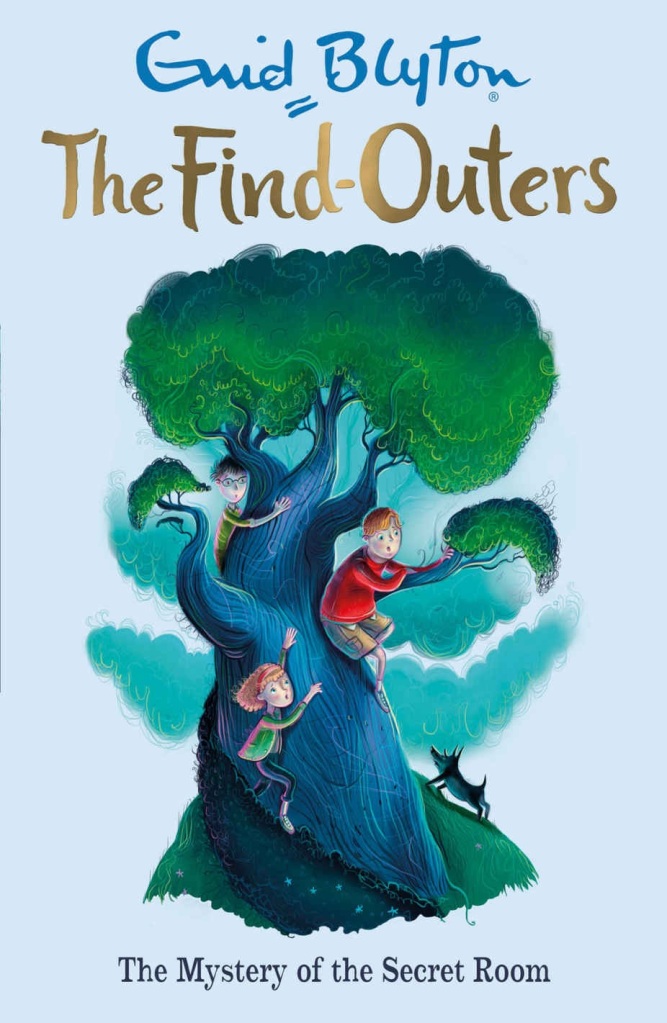
Not a great mystery, but a great example of how to develop a series, with much more character work done in unpicking the undeniably thin case at its core. Some good comedy, too, showing Blyton’s light touch as more than simply a refusal to engage with any topic meaningfully — she’s actually funny when she intends to be, which goes a long way. The key concepts here — Fatty enshrined as head of the Find-Outers, Mr. Goon well established as their nemesis — would form the basis of everything going forward, and so the book carries extra weight for the ideas behind the series coming into focus. Good peril in the closing stages, too. So, yes, much to like here even if it doesn’t feel essential. [My review]
8. The Mystery of the Missing Man (1956) [FFO #13]
The Find-Outers tackled three-and-a-half impossible crimes in their careers, of which this was the third and perhaps least impressive. A criminal has escaped, there’s reason to believe he may be hanging out at the nearby fairground (a milieu Blyton had already used in the likes of The Rilloby Fair Mystery (1950)). A not particularly difficult-to-solve vanishing occurs and, er, I’m vague on details otherwise. Earns extra credit for the know-it-all horror that is Eunice, however, because I find precocious kids being irritated by other precocious kids somewhat amusing in these sorts of novels. How does she end up impacting the plot, though? I cannot remember. [My review]

7. The Mystery of the Pantomime Cat (1949) [FFO #7]

If you’re interested in this series from the perspective of them as examples of detection, this is the point on the list where you start paying attention. A pleasingly sensitive depiction of a simple-minded man accused of a theft forms the backbone of this, and the Find-Outers must systematically work through the other suspects to establish who actually did steal the money. Displays rigour, creativity, and many of the stronger aspects of this series in how the facts of the crime are run to ground, and loses kudos only because of a Knox-baiting use of unfairness that swoops in just as I was expecting a masterstroke, and so spoils things somewhat. Until then, though, this is textbook detection. [My review]
6. The Mystery of the Strange Messages (1957) [FFO #14]
A clever thatching of ideas here, with Mr. Goon sent messages in semi-impossible circumstances which hint at a criminal in his midst…but no-one of that name lives in Peterswood. The detection here isn’t the strongest — when Daisy is the one to crack the case, you now it can’t be that challenging — but the method employed by the Five remain charming, and the sense of social reparation paid by those who have been to, and perhaps been broken by, prison is an intriguing thread for a throwaway book aimed at 10 year-olds. Sure, you could argue that Blyton is simply obsessing about the middle class status quo, but I choose to see something larger in these moments, and I think it deserves some celebrating. [My review]

5. The Mystery of the Spiteful Letters (1946) [FFO #4]
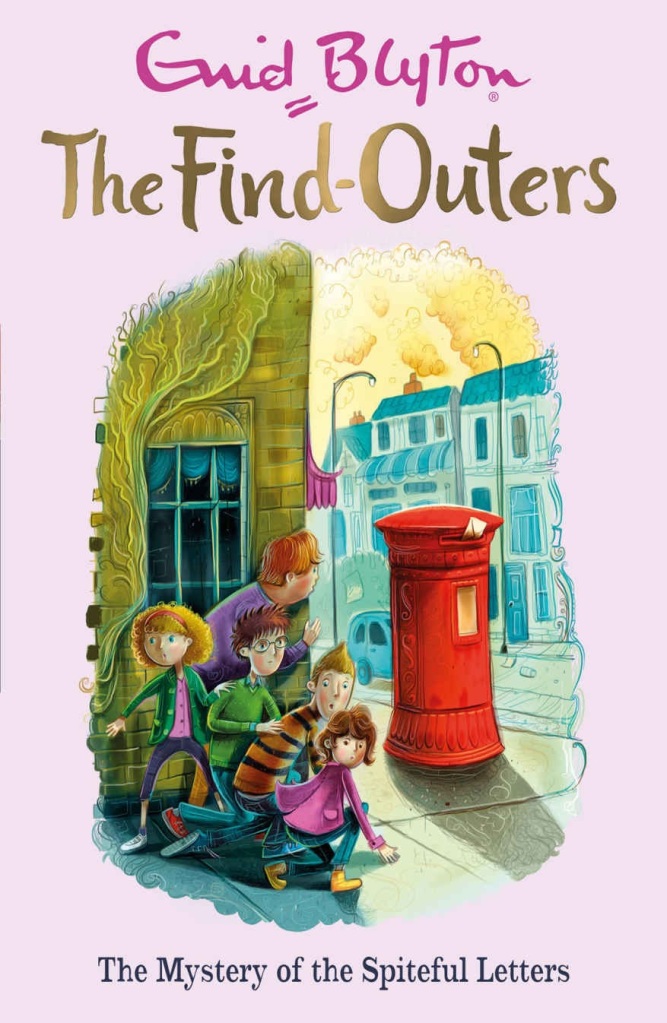
A surprisingly savage book for such a genteel author to have written, The Mystery of the Spiteful Letters (1946) really brings home the hideous nature of poison pen letters, and the difficulty faced in trying to run the sender to ground. Clever detection is required in light of there being none of the physical clues that have been so prevalent in earlier entries, and the clever lack of something will always go down well with me (I do so love negative evidence). It’s a little disappointing, if not completely surprising, that this didn’t betoken a change in tone and focus for the series, but it’s also a very bold book for Blyton to have written, and sort of leaves on in wonderment that it ever actually happened. [My review]
4. The Mystery of the Disappearing Cat (1944) [FFO #2]
The first impossible crime encountered by the Find-Outers — and a legitimate one, too — in which a prize moggy disappears from its specially-built house when the only person in the vicinity is a young boy who has befriended our quintet (and so, by Minor Felonies rules, cannot possibly be guilty). Takes a while to get going, with a first half largely devoted to japery, but once the mystery kicks in, and throws a wonderfully brazen clue at you in the process, there’s much to enjoy. Tricky, too, to explain an impossibility to younger readers, and this does a superlative job of making the process clear. Has growing pains, for sure, but is also a pure piece of detective fiction to delight the aficionado. [My review]
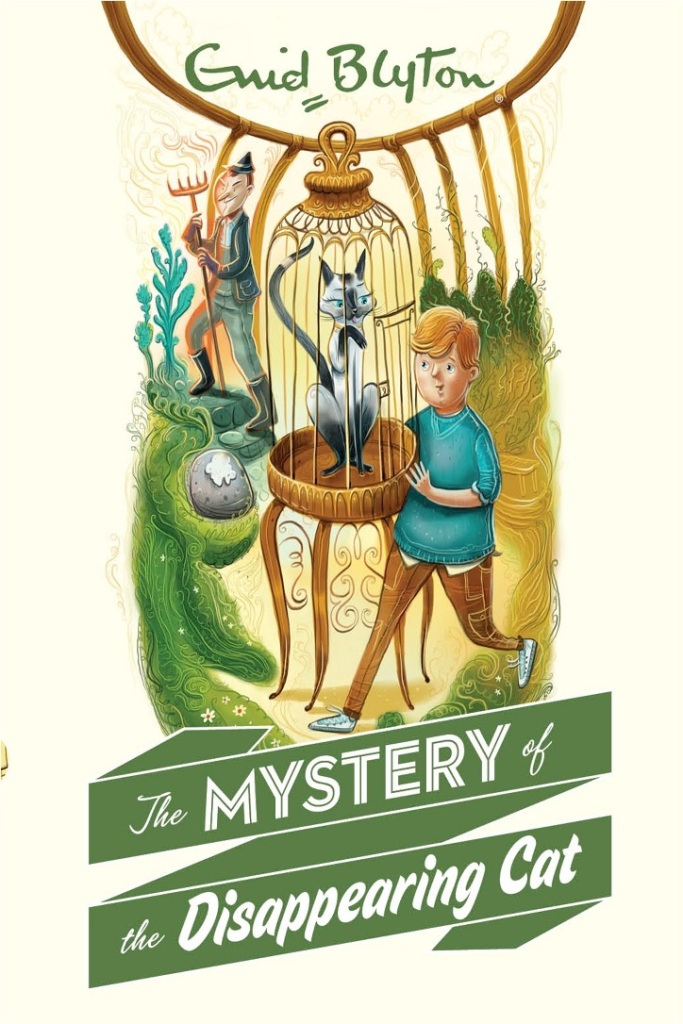
3. The Mystery of the Burnt Cottage (1943) [FFO #1]

The first outing for the Find-Outers set the scene remarkably, providing a blueprint that was adhered to pretty consistently given how long the series would run. The careful, rigorous investigation, keeping multiple suspects in view and discarding them one-by-one as evidence mounts up around their innocence, is delightfully Humdrum, and Blyton does well to keep the lines clear while also muddying the picture of the final outcome. Sure, adults would wish the final revelation had been clued more ahead of time, but its wonderful to see how the promise of this book paid off down the years. [My review]
2. The Mystery of the Invisible Thief (1950) [FFO #8]
My first encounter with Fatty and co., and as such a book for which I retain a huge fondness. Does that wonderful thing of making an impossible crime very clear to younger minds, and then explains it with superb clarity so that the mystery is easily resolved. In between it runs down so many false trails while pursuing various leads and obscure clues that my Humdrum-loving heart can hardly fail to be warmed. ‘Serious’ detective novelists have written less successful detective novels than this, and I’m delighted to have stumbled over it and thus into its fourteen brethren these last few years. [My review]
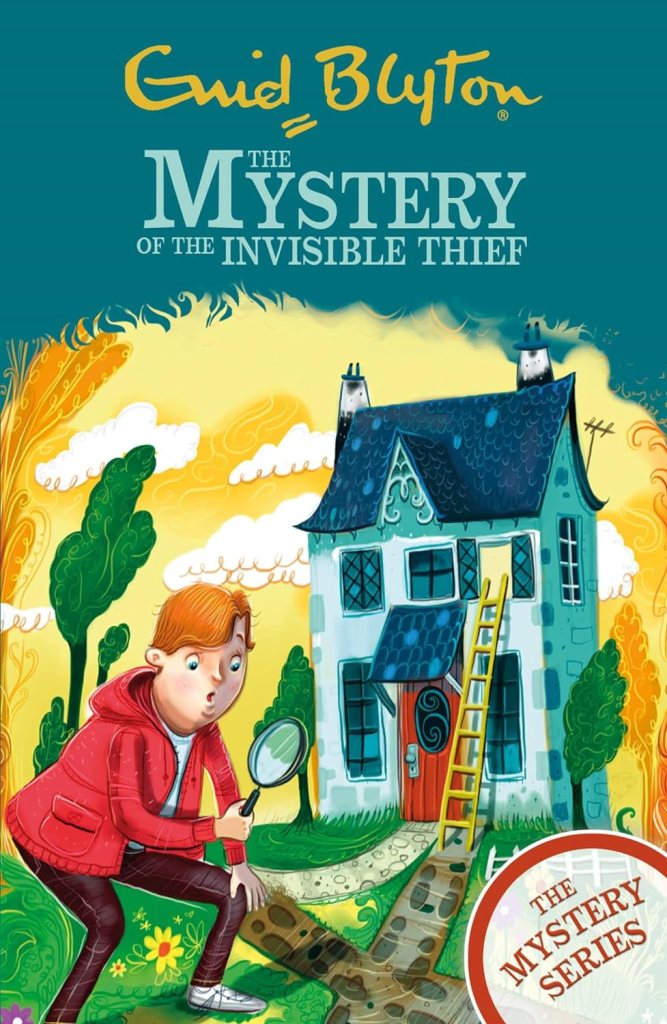
1. The Mystery of Tally-Ho Cottage (1954) [FFO #12]

The pinnacle of not just this particular series but arguably of juvenile detective fiction as a whole, The Mystery of Tally-Ho Cottage (1954) is a cannily-layered mystery with plenty of clever ideas. The disappearance of a pair of criminals at first doesn’t seem to offer much potential — they’ve fled Peterswood, after all — but Blyton works in magnificently clever clewing and some very intelligent developments which provide clear hint after hint about the true nature of things (and it pays off with a conceit straight out of Edgar Allan Poe). But mainly its just a swift, light, and hugely fun time that respects its audience and deserves to be far, far better known in this community. [My review]
~
I enjoy writing these lists, even if I’ll have cause in the years ahead to question my choices. Still, anyone interested in checking these out could do far worse than picking any of the top 7, and there’s plenty to enjoy in the lower-ranked titles once you’re on board with the series as a whole. Who knew there was such detectival delight in Blyton’s output? And where do I turn next for my regular dose of unexpected juvenile detective excellence?!
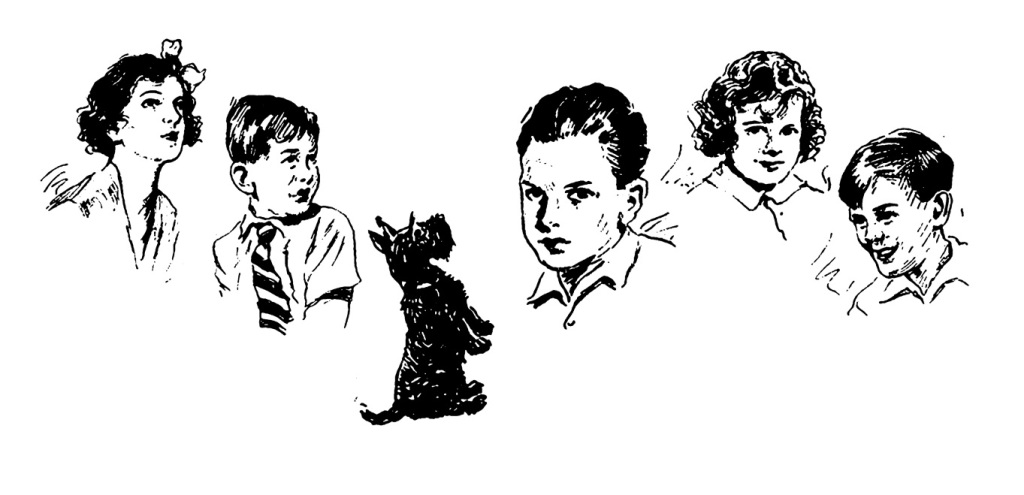
As a kid this was my favourite Blyton series, not least due to an early interest in ventriloquism. Have really enjoyed your reviews Jim, take me back to 1977 when I was a mere nipper, before Christie, Chandler, ABBA, the movies and the invention of the opposite sex changed everything 🤣
LikeLike
Ah, yes, the eternal struggle 😄
LikeLiked by 1 person
Thanks for the overview of the series, very thorough and helps me know where I might start!
I noticed you have put both Secret Room and Spiteful Letters at #4 in the series…
LikeLike
Good spot, thank-you, now corrected.
Hopefully this list will encourage someone to take the plunge on these books…though, given how unpopular these Juvenile Mystery posts prove to be, I can’t believe I’m going to convert anyone to their charms 🙂
LikeLike
really interesting list, Jim! And you knocked it out of the park at Bodies! You were terrific!
LikeLike
I’ve always enjoyed your Juvenile Mystery posts, and this ranking is really helpful. Wish I could have seen your talk, but Tally-Ho Cottage here I come!
LikeLike
I need to return to this series and juvenile mysteries in general one of these days, but I’ll make a point to start with The Mystery of Tally-Ho Cottage. Beating out The Mystery of the Invisible Thief for the best in the series is no mean feat. You hit the nail on the head that serious detective novelists have written less successful detective novels to the point where it can be used as a beginners guide/text book for aspiring writers on how to handle clues, red herrings and misdirection. The Mystery of Tally-Ho Cottage has a high hill to climb.
The Mystery of the Disappearing Cat is far better than the lackluster The Mystery of the Burnt Cottage.
LikeLike
Any chance of you publishing/recording your story from the conference? I’d love to share it with my family.
LikeLike
Kind of you to ask, but my feeling at present is that I wrote it for that specific occasion and I’m keen for it to remain an experience for those who were present. Maybe I’ll change my mind in future, but for now I think I’ll keep it unpublished 🙂
LikeLike
First, yes, anyone who was present at your talk is still recovering: a tour de force and an unforgettable experience.
Secondly – I would never argue with anyone else’s rankings. But if *I* were doing my ranking, The Mystery of the Secret Room would be very high up the list – it contains the invisible ink, how to get out of a locked room, disguises, Fatty not knowing how much a house might cost, Bets’ moment of triumph. Plot makes no sense, but I just feel it has my favourite moments in it.
And, as you say, it’s funny: it has two of my all-time favourite Blyton jokes in it:
Pip invites Larry to sit down. ‘There’s plenty of room at the table. Fatty’s not here yet.’
[has that been censored yet?]
And the sublime moment where Bets accidentally knocks over the invisible ink and it spills, and Buster drinks it.
‘Oh, Buster Buster you’ve drunk invisible ink!’ cried Bets, almost in tears. ‘Fatty, will he become invisible?’
Fifty+ years that’s been making me laugh like a drain.
LikeLike